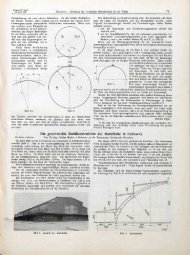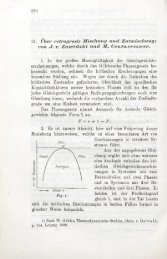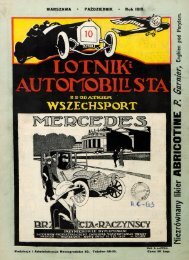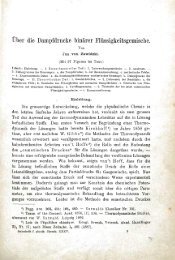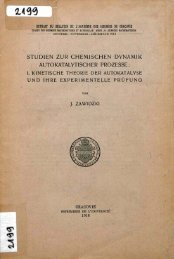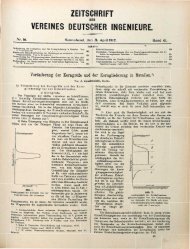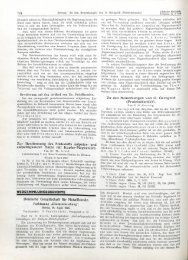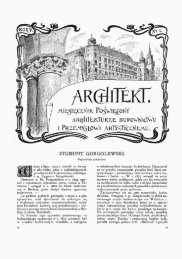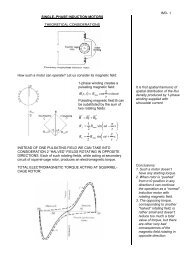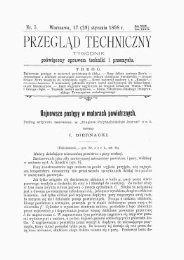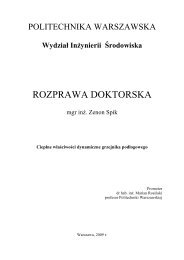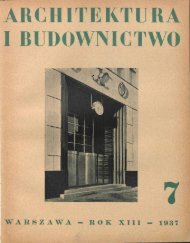REAKCJE NITROPARAFINÓW. VII REAKCJA NITROMETANU Z ...
REAKCJE NITROPARAFINÓW. VII REAKCJA NITROMETANU Z ...
REAKCJE NITROPARAFINÓW. VII REAKCJA NITROMETANU Z ...
Create successful ePaper yourself
Turn your PDF publications into a flip-book with our unique Google optimized e-Paper software.
590 Z. Eckstein i T. Urbański<br />
REACTIONS OF NITROPARAFFINS. <strong>VII</strong><br />
REACTIONS OF NITROMETHANE WITH ACETALDEHYDE<br />
AND AMINES .<br />
by<br />
Z. ECKSTEIN and T. URBANSKI<br />
When studying the reaction between nitromethane, acetaidehyde and<br />
amines, the following were the conclusions related to various stages of<br />
this reaction.<br />
It has been found, that the addition of acetaidehyde to nitromethane<br />
may lead not only to the formation of l-nitro-propane-2-ol 1<br />
) (according to<br />
Henry 2) ) but also to the formation of 3-nitro-pentane-2,4-diol (II) which<br />
so far has been prepared by Schmidt, Wilkendorf in an indirect<br />
way 5 ). It has now been shown, that the formation of (I) occurs with the<br />
yield of 75—80% (calculated for acetaidehyde), when pH is kept between<br />
7,5 and 8,5 by means of K2CO3.<br />
The product (II) was formed when a great excess of acetaidehyde<br />
(cone. 60%) was used and pH kept between 6,5—7,0. The yield was 80—<br />
95% calculated on nitromethane. The product (II) could not be brought<br />
to crystallisation, evidently as result of the presence of impurities.<br />
The substance (II) and nitrous acid do not furnish pseudonitrol but nitrolic<br />
acid. This is due to the splitting off a molecule of acetaidehyde in<br />
the strongly alkaline medium, prior to the addition of sulphuric acid in<br />
the presence of sodium nitrite. The identification of the substance was<br />
carried out in a twofold way:<br />
1. The product (II) acetylated with acetyl chloride yielded 3-nitro-<br />
2,4-diacetoxy-pentane (III), m. p. 87—88°C (m. p. 85—86°C according<br />
to Buckley and Charlis 4<br />
).<br />
2. The product (II) reacted with aldehydes and ketones furnishing<br />
cyclic acetals and ketals, i. e. derivatives of 1,3-dioxane of the general<br />
formula (IV). This proved the (3-glycol structure of (II). The<br />
following were aldehydes used to carry out this reaction: p-nitro-,<br />
0- and p-hydroxy-, p-methoxy-, p-chloro-, p-dimethylamino-, p-acetylamino-benzaldehyde<br />
and P-phenylpropionic aldehyde. Ketals<br />
were prepared from acetone and methyl-n-propyl ketone. All products<br />
(IV) as well as the diacetate (III) show the pseudonitrol reaction<br />
of the secondary nitrogroup, which is contrary to the behaviour<br />
of the substance (II).<br />
In order to obtain readily crystallising products, from nitromethane and<br />
acetaidehyde, a number of halogen derivatives of (I) and (II) were prepared.



